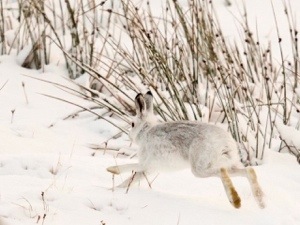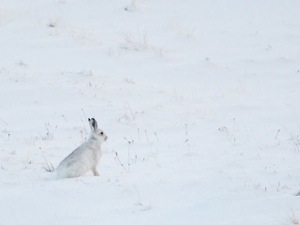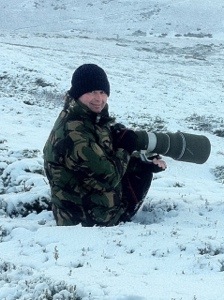The Elusive Mountain Hare
December 24, 2013 2 Comments
In part 2 of this series of posts about photographing (mainly wildlife) in a recent return to old haunts in Scotland, I'll cover a very enjoyable day spent tracking Mountain Hares in the Glenlivet Estate. A number of people operate Mountain Hare 'safaris', including James Moore and Andy Howard – both come very highly recommended but on this occasion we used Dave Newland from Glenlivet Wildlife and we can also personally recommend him and his Land Rover!
Sal and I met Dave at the village of Tomnavoulin, leaving our car with a slight sense of trepidation as it was snowing heavily and were slightly nervous about getting back out again, let alone about heading up into the mountains. Dave was reassuring though and we boarded his Land Rover and soon we were off-road for the trek across to the base of a beautiful snow-covered juniper hill.
After leaving the Land Rover we hiked in the blizzard up the hill and to be honest, visibility was so poor that I didn't think we'd see anything at all. Fortunately though, the snow quickly thinned down and we were even rewarded with some sunshine and wonderful light. The hares were in their perfect camouflage environment and so we weren't able to spot any from a distance and work towards them slowly to get those great face-on pictures. Perhaps next time. However, there were plenty of Hares and their method of running is to sprint swiftly for a spell then pause and reassess so it was possible to get several shots of them.
I used the 500mm lens throughout and without it, I wouldn't have got a single useable shot. It's a big lens and had to be carried and hand-held as the photo opportunities were pretty fleeting. To ensure I avoided camera shake and to stop these swift beasts in their tracks I went for a shutter speed of 1/3000s for every shot with an aperture of f4, leaving the auto ISO to work its magic although the snow meant that I never saw more than 1000.
Hares weren't the only animals on the hill – the grouse were plentiful and several Deer made an appearance too, sometimes the Deer vs Grouse standoff was quite funny!
The hike was reasonably tough in about a foot of snow and the blizzard at the start 'interesting' but the subsequent light, the view, the diversity of wildlife and of course an incredible chance to see Mountain Hare were all worth it. The Mountain Hare is a nocturnal animal (we saw a Golden Eagle prowling several times) to avoid being chomped – they sleep deep in the juniper bushes then move uphill to feed late in the afternoon. When they get a move on, they can reach 60mph uphill so it's certainly not worth chasing them! If you know where one is, it is possible to very slowly approach and get within 20ft or so if its a tolerant animal but if like us, you encounter perfect conditions for the hares, it won't be possible to see them apart from when they make their move up the hill.
I hope you enjoyed this post and it maybe gives you the urge to investigate this elusive animal – the guided tours are definitely the way to go!














Recent Comments